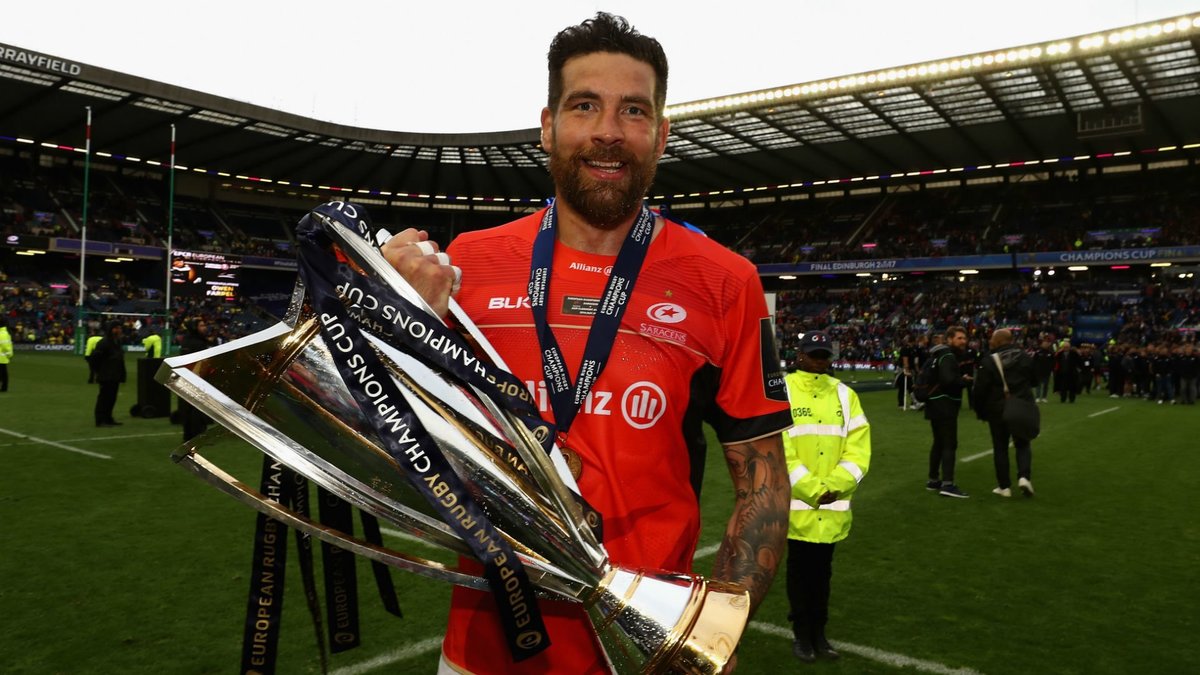Q & A: Jim Hamilton reveals what it takes to be a top class secondrow

Jim Hamilton may have hung up his rugby boots but if Gatland calls he’ll be ready as he’ll be in New Zealand with fellow Rugby Pod presenter Andy Goode following the Lions Tour for Rugby Pass.
Hamilton has played in the Second Row at the top level throughout his career and has an impressive international cap collection for Scotland. When I sat down for my Rugby Revealed interview with Jim he explained that locks aren’t just there ‘to give the tall fellas something to do’, locks are key to winning possession for your team jumping for lineouts and restarts, and as part of the ‘tight five’ they are in the engine room of the scrum.
Here he tells us why he enjoys being at the heart of the action and why he thinks locks make great captains.
What are the main responsibilities of a lock forward?
I think traditionally you have to be good at the three set piece areas, which are scrums, lineouts and kick offs. The basics are so important and other parts of your game need to be built around these.
Rugby is said to be a game for all shapes and sizes, is this particularly true for lock?
That is the best part of rugby, although you only have to look at George North, the Wales and Northampton wing, who is bigger than most forwards. Gone are the days where the only trait for a lock is height. Nowadays, you need to be strong and athletic. Being tall is your natural base and the same as your basics in the game; you need to build on what you naturally have.
What do you most enjoy about playing lock?
I enjoy being in the middle of all the physical action, middle of the scrums, lineouts and mauls. It is a very diverse position where you have to have many strings to your bow. I think that’s why a lot of captains play in the lock position. Locks are in the middle of everything.
What are the most important skills for a young lock to develop?
I think understanding the lineout in both attack and defence is key to becoming a good lock forward. A lot of tries are scored from lineouts and knowing how to attack and defend this set piece is crucial. Fellow players and other teams generally judge locks on the efficiency of a lineout.
Also, paying attention to body position is important. Obviously it is tougher for tall players to get low body positions. Being tall, you will always be told to get lower, coaches love shouting that! Generally if you tackle lower, ruck lower you are more effective for your team.
How do you work on your lineout calling?
Lineout calling is something you need to practice a lot in training. I find as a caller, you should have three options that are live (available) for you to call. Front, middle and back. There may also be movement in your lineout to confuse the opposition defence and to ensure your team can win good lineout ball. It is vital to keep the lineout calls as simple as possible so everyone can understand them and react accordingly. When your lineouts go wrong, it is usually the props’ fault!
Lineout analysis is a huge part of educating yourself on the set piece. You will see traits in teams and throwers. As a lineout defence you can manipulate where the opposition throws to. If you have studied an opposition hooker and know he struggles to throw to the back, then your team should contest the front and middle of the lineout.
What advice would you give to a young Jim Hamilton starting out?
That you need to enjoy playing at whatever level you play. If you are young, try different positions. Don’t get too worried about making it professionally. There are a lot of difficulties along the way with injuries, politics and loss of form. If you are good enough and work hard enough, you will get there. Stay positive in your mind and don’t let anyone tell you it’s impossible.
Allow for knock backs and injuries. We are in a contact sport, so unfortunately, injury is a normal thing. If you are injured, work on other parts of your body or other areas of your game, such as game analysis. There are always areas you can work on.
It is important to have something else away from rugby that you enjoy. If you make it professionally as a rugby player, it’s great but you will still need job once your rugby career is over.
What are some of your career highlights?
Being the 1000th man to play for Scotland was and is a highlight for me. There is nothing better than playing international rugby and travelling the world. Being a part of the Leicester Tigers team in the glory days was also amazing.
When I won my 50th cap at Murrayfield against Australia. I had my son Jack-James who was 3 years old present my shirt, run out on the pitch with me and stand with me while we sung the anthem. That was definitely my proudest moment as a rugby player.
Gavin Hickie, USA Rugby Mens Collegiate All-Americans Head Coach, is a former Ireland A & 7s, Leinster and Leicester rugby player now Head Coach of Dartmouth Rugby. He writes for RugbyToday.com and other publications when not coaching and blogging on lineoutcoach.com.
Gavin works with writing partner Eilidh Donaldson. who he describes as the ‘brains’ behind Lineoutcoach.com. Their book Rugby Revealed is available from Amazon and is a guide to the game which features advice from over 100 top players and coaches.









































